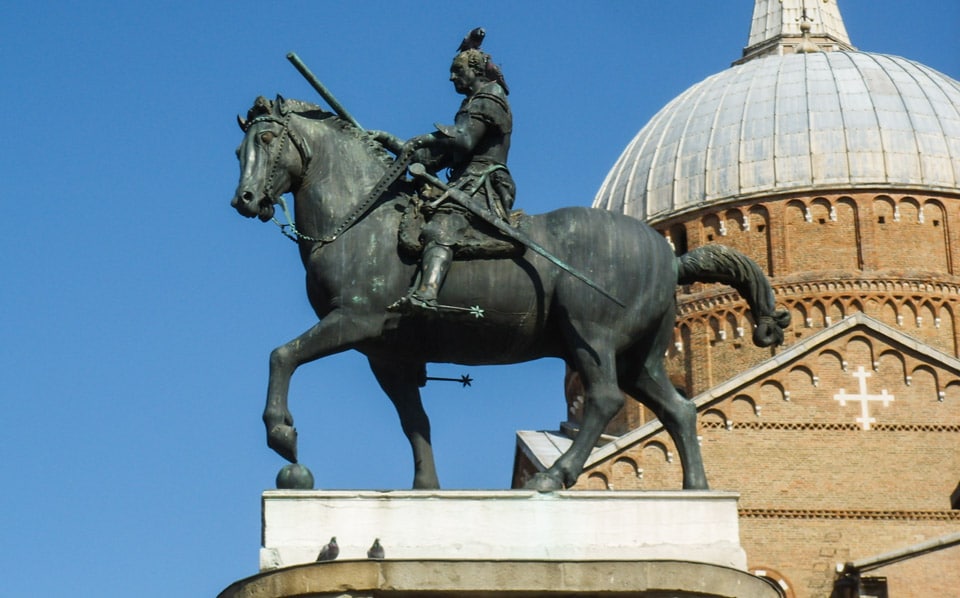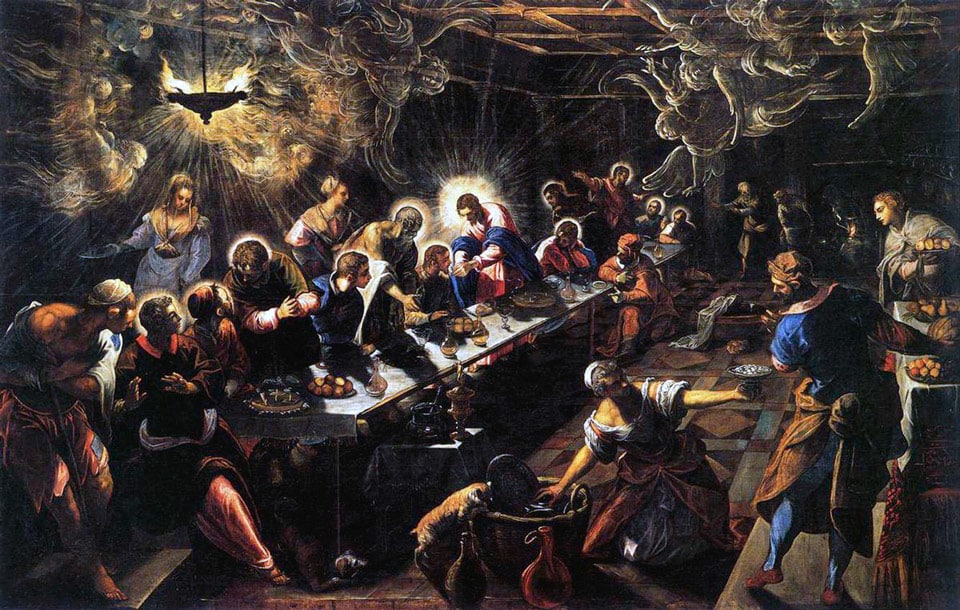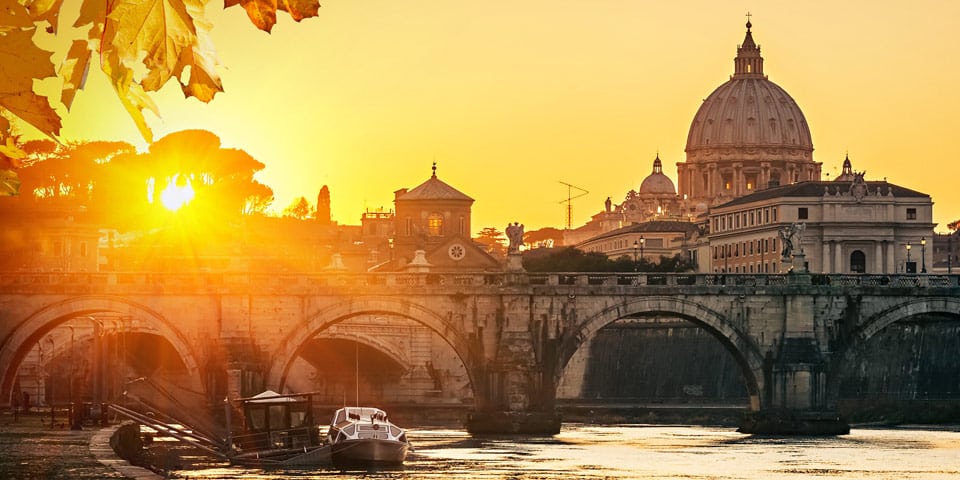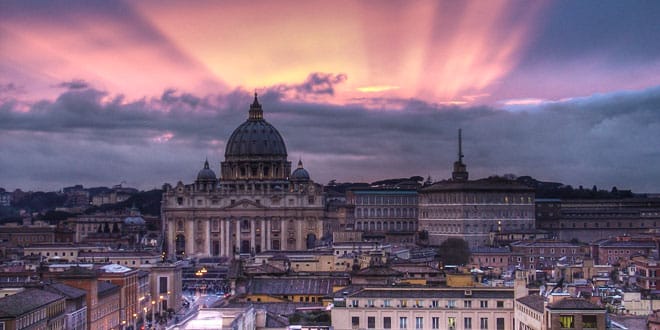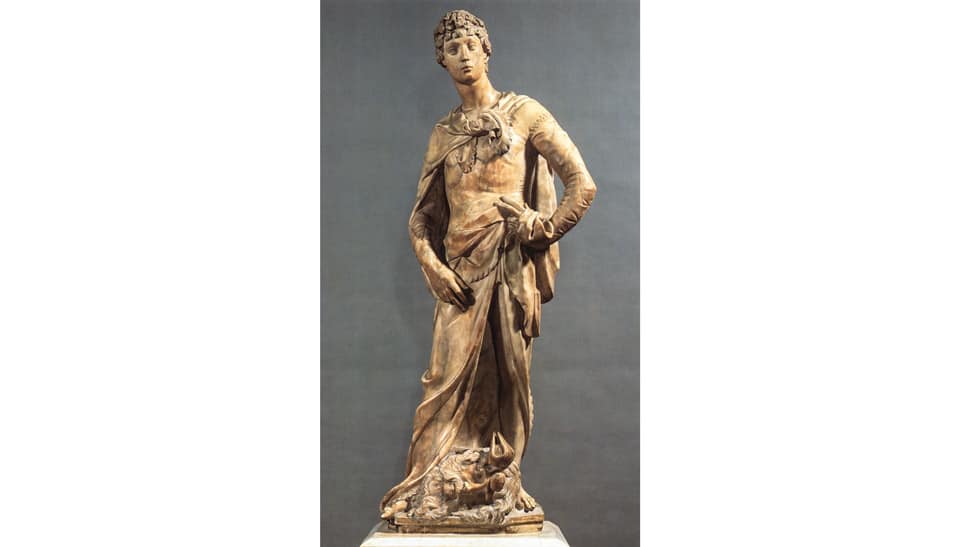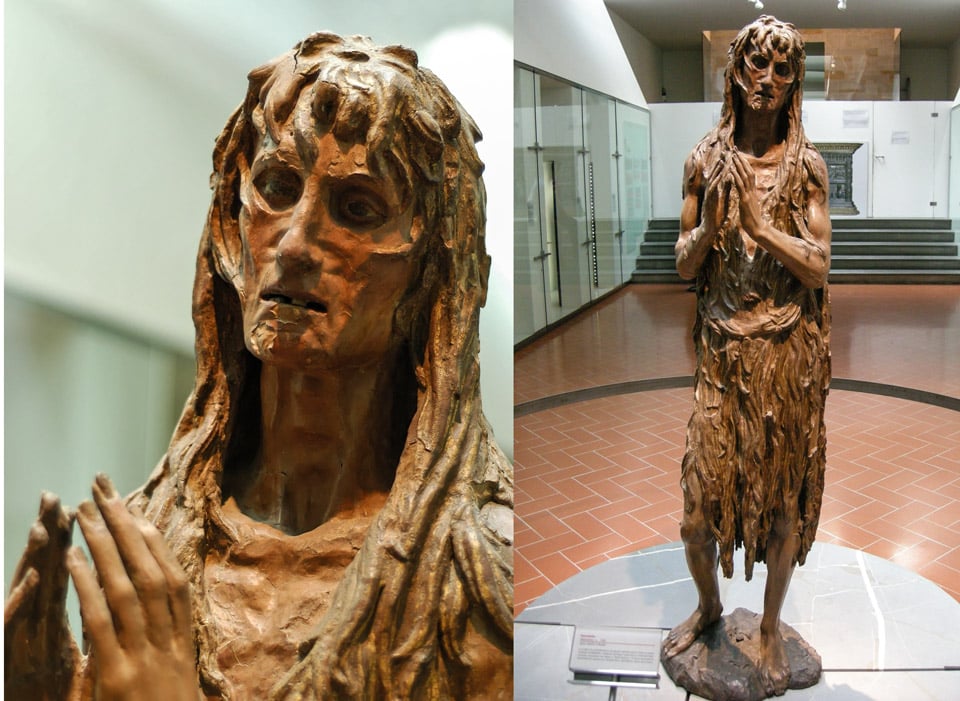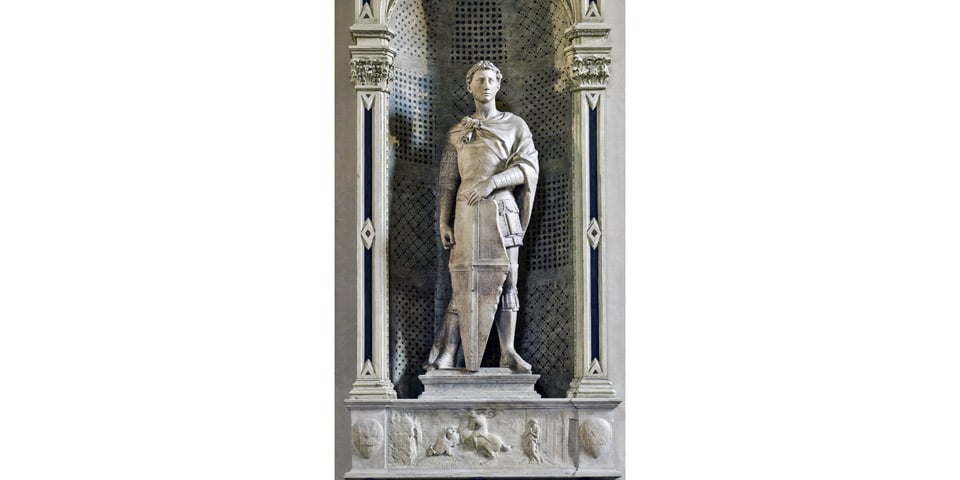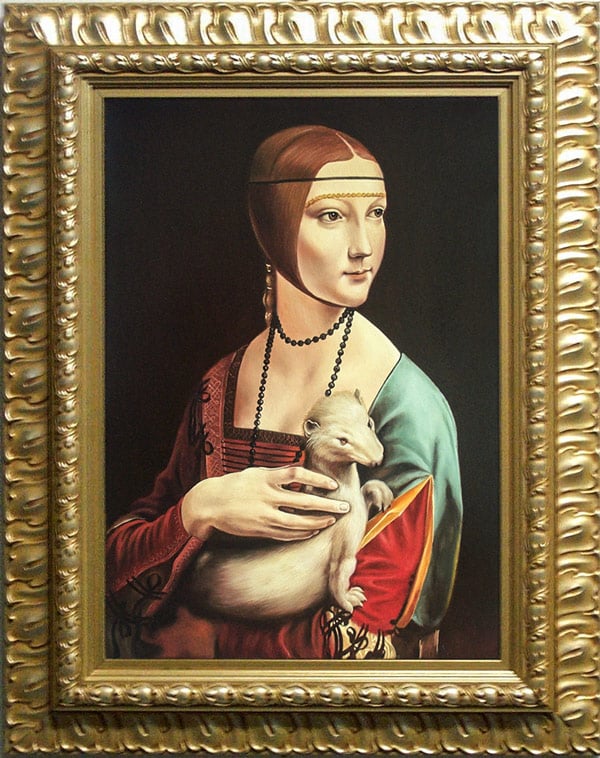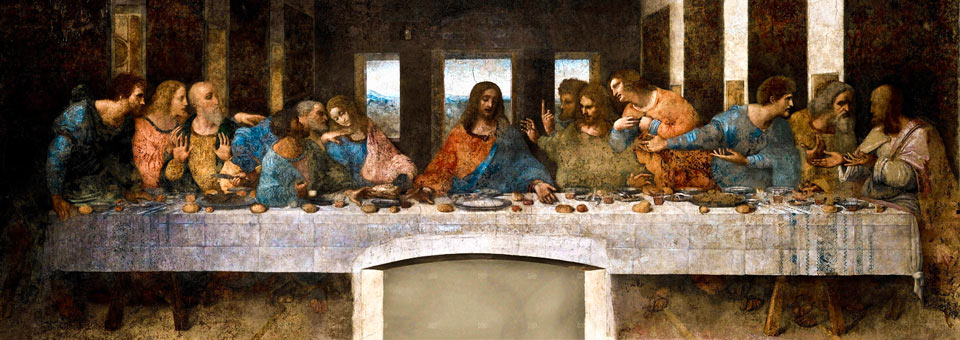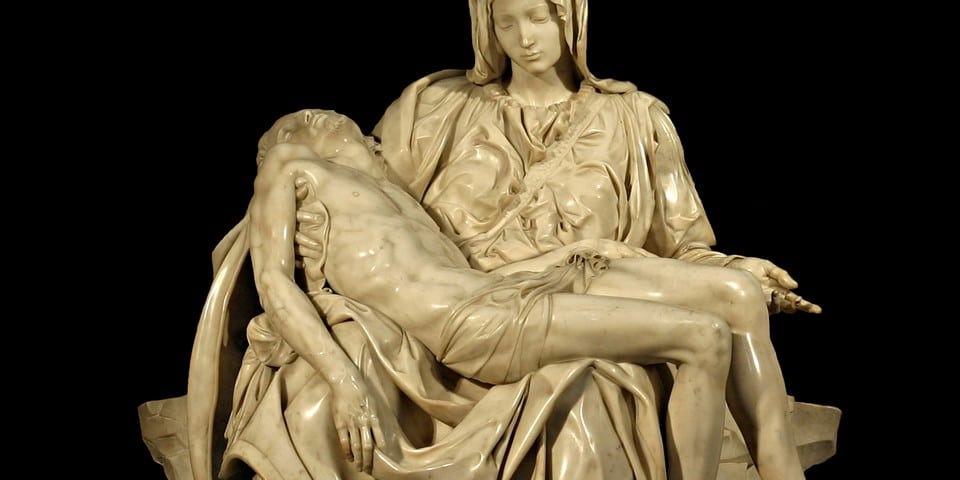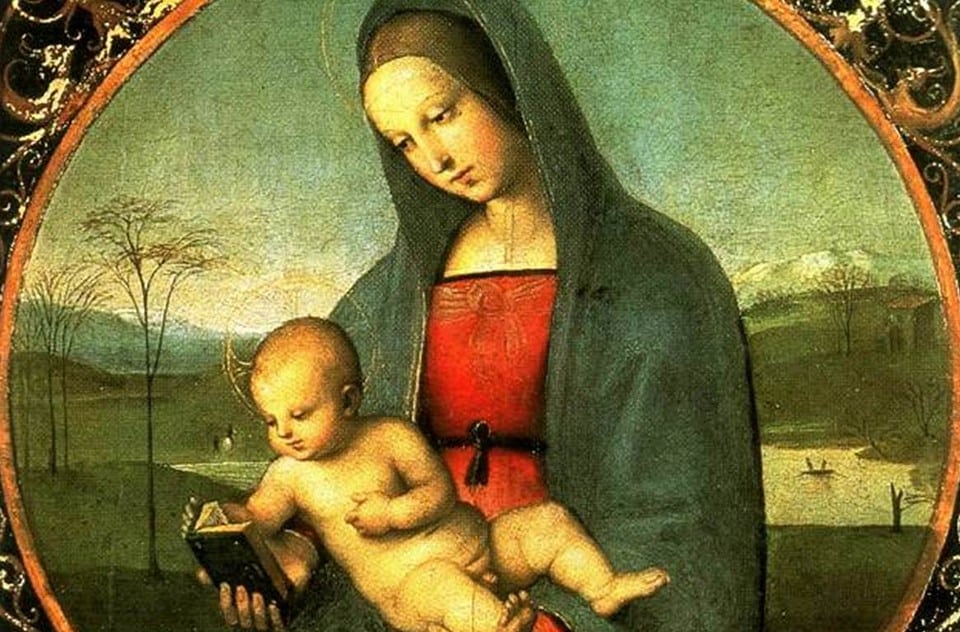“To be born again or to be reborn” (renasci) is the Latin translation of the name of an era of world significance in the development of culture. The Italian Renaissance or Renaissance (Rinascimento) built a bridge between antiquity, the Middle Ages, and the New Age.
Page Contents
The Renaissance of the ancient heritage
After the collapse of the Eastern Roman Empire (“empire of the Greeks”) under Crusader attacks in 1204 and its final demise in the mid-15th century, emigrants from Byzantium arrived in the center of the Mediterranean. They introduced Italians to ancient tracts of personal libraries and works of art.
Medieval Europe was not familiar with the culture of the Greco-Roman world, which aroused unprecedented interest. Francesco Petrarca, Giovanni Boccaccio, Poggio Bracciolini and other humanists went to distant monasteries in search of ancient manuscripts.
In 1404 Donato di Niccolo di Betto Bardi traveled from Florence to Rome to sketch and measure the sculptures of ancient architecture. The young Michelangelo Buonarroti copies Greek statues (1488). Raffaello Santi studying the ancient buildings on the territory of Rome (1513-1516) by order of Pope Leo X.
Why it All Started in Italy
The social background of the Renaissance was due to the political phenomenon of the country. The empire and church were replaced by independent city-states, most of which were republics. Independent politics, democratic orders differed from European monarchies. The early Renaissance knew no centralized authority. Even in small towns exiles found the support and understanding of humanists.
Italians recognized themselves as a united, optimistic, life-affirming people. In the center of the Mediterranean, popular rule took shape, radical change took place, and the Renaissance took shape.
Tuscany
The homeland of the Renaissance, republican Tuscany, was the first to change the structure of society. Artists were privileged, included in the structure of power, became diplomats. The craft of painters and sculptors was equated with science.
Dante Alighieri, Filippo Brunelleschi, Leonardo da Vinci, Sandro Botticelli, Michelangelo di Buonarroti all worked in Tuscany. A new phenomenon emerged – patronage of the arts.
The prominent statesman Cosimo di Giovanni de’ Medici begins a line of patrons of architects and artists. For two centuries, Tuscany becomes the center of artistic life and determines the course of Italian culture. The UNESCO World Heritage List includes 7 sites of the region:
- Historic Center of Florence
- Historical center of Siena (Siena)
- The “Ideal City” of Pienza
- City of the Family Towers of San Gimignano
- Piazza dei Miracoli or Piazza delle Miracle in Pisa
- Medici Villas and Gardens
- The Cultural Landscape of the Val d’Orcia
Padua
At the beginning of the 15th century, the freedom-loving city of Padua was the main educational center of Italy.
Here the founder of modern science, Galileo Galilei, and the progenitor of the Florentine Renaissance, Donatello, were born and worked. The ten-year period of creativity in Padua is considered the peak of the sculptor’s achievements. The master creates unsurpassed works: the copper equestrian statue of the Paduan ruler Gattamelata, bronze bas-reliefs for the Basilica Pontificia di Sant’Antonio di Padova, a sculpture of John the Baptist.
The monumental Gattamelata, three meters tall, by Donatello on an eight-meter pedestal, is placed at the entrance to the Cathedral of St. Anthony.
In Padua, Tiziano Vecellio painted the Basilica and Scoletta di S. Maria del Carmine.
Ferrara
The flowering of the “Ferrara Renaissance” is linked to the dynasty of the ruler of the city, the Duke d’Este (1393-1441). The patron of the arts tried to decorate his palaces with unique paintings and frescoes, inaccessible to the public.
His passion for esotericism and astrology influenced his choice of subjects filled with allegory and irony. The artists lived in the palace and maintained a given style and mood in their works. The group of innovators formed a school of painting that differed from the work of other representatives of the Renaissance.
Art historians call the Ferrara artists “visionaries of art”. Plots of paintings, expressive images, well-built composition, lush colors, as if taken from the present and transferred to the distant past. The style of the artists was a combination of the art of bold provocation and the Renaissance. Works by Cosimo Tura, Nicola Pisano, Dosso Dossi, Lorenzo Costa and others are kept in pinacotheques and museums.
The paintings of innovative artists are estimated at 20-35 million dollars.
The main attractions of Ferrara:
- Korso Erkole I d’Este (Korso Erkole Street), which preserves all the Renaissance palaces in pristine condition;
- The Castle of the Dukes of Este (Castello Estense) – construction began in 1385;
- Palazzo dei Diamanti (Palazzo dei Diamanti) – the only Renaissance monument in Ferrara lined with marble. The “Palace of Diamonds” was built by the architect Biagio Rossetti between 1493 and 1503 and is decorated with 8,500 diamond-like stones with elaborate cuts;
- University of Ferrara (Universita di Ferrara) – one of the oldest universities in Europe founded in 1391 on the initiative of the ruling family D’Este.
Venice
In the second half of the 16th century republican Venice takes over the baton of the Renaissance center.
The Venetian school of painting is formed. The works of Giorgione (1478 – 1510) and other masterpieces of High Renaissance survived. Titian Vechellio (1477 – 1576) gets the recognition of his contemporaries. His famous works are housed in the Gallerie dell’Accademia. There are also works by Giovanni Bellini, Vittore Carpaccio, Paolo Veronese and rare paintings by Antonello da Messina.
Art historians recommend a visit to the Church of San Giorgio Maggiore, which houses a daring work by Tintoretto.
Painted especially for the temple, the gigantic “Last Supper” is striking in its intertwining of the divine and the earthly. The room in which the painting is located has a double illumination: the ordinary one from the suspended lamps and the universal one that inexplicably spreads around the heads of Christ and his apostles.
Periods of the Age
It is impossible to ascertain the exact dates of the several centuries of the Renaissance. Differences in social and political life influenced the development of art in the regions. Doctor of Art History, Professor Victor Nikitich Lazarev stated: the science of the Italian Renaissance is so much advanced that a number of accents have to be clarified (“The beginning of the early Renaissance in Italian art”). However, general patterns have allowed us to identify four stages of the Italian Renaissance.
Proto-Renaissance
Italian culture is experiencing an unprecedented rise that begins in the late XIII century and spans the XIV century. Such a transition from the Middle Ages to the new age was not in the history of other European countries. Literature in the native language flourishes. Poets of a new style (“sweet”) appear, replaced by Dante. The impersonal craft of workshop painters is supplanted by masters working individually. In sculpture the foundations for the development of Renaissance art are laid.
In the XIII century Niccolo Pisano works in Pisa. The master becomes the founder of the school of sculpture, which has an impact on Italy until the middle of the XIV century. Architecture lags behind in its development, remaining within the framework of medieval traditions. The first sprouts appear in the spatial solutions and ornate decorativeness of buildings. Italian culture of this time is called the age of Dante Alighieri and Giotto di Bondone.
Early Renaissance
The Early Renaissance in Italy is the first half and middle of the 15th century. There is a sharp turning point in art. The hotbed of Renaissance from Florence spreads unevenly across Italy. In the north, the Gothic tradition is still alive. In the south works Filippo Brunelleschi, who announced himself by building alfantica.
From the middle of the third decade the reformer of the Florentine school, Masaccio, makes a breakthrough in painting. Donatello lays the foundations of an individual sculptural portrait. Monumental forms appear in the work of Nanni di Banco, sculptor of the “Florentine school” (the figures of the four saints in the Orsanmichele niche).
During this period, art turns to scientific knowledge. Artists and architects are busy developing the theory of proportions and linear perspective. The study of the anatomical structure of the human body is used to create realistic works.
High Renaissance
At the turn of the fifteenth and sixteenth centuries, the Renaissance enters a 30-year period of exceptional artistic development in Italy, especially in Rome. Pope Julius II (Iulius PP. II) becomes the chief patron of the arts. The rich history of the ancient city brings the masters back to antiquity. The theme of glorification of heroic deeds and duty becomes fashionable.
The rise of art is associated with the names of Leonardo da Vinci, Giorgione, Raphael, Titian, Michelangelo. Since 1503 begins the “golden era” of architecture. Donato (Donnino) di Pascuccio di Antonio detto il Bramante) lays the foundations of the architecture of the new period. The Basilica di San Pietro (St. Peter’s Cathedral in the Vatican) becomes a classic example of the achievements of High Renaissance architecture.
Late Renaissance
The complex period of the Late Renaissance began in the mid-16th century. Pope Paul III (Paulus PP III) sees the main task as the struggle against dissenters. The Council of Trent (December 13, 1545 – December 4, 1563) launches an attack on Renaissance culture. The Church bans books by Petrarch, Dante, Boccaccio and other humanists. The pope exercises control over the arts. Artists are required to be orthodox and canonical. Italian artists perceived the change in different ways. Major artists of the older generation (Titian, Michelangelo) maintained the artistic traditions of the Renaissance.
Young artists (Veronese, Bassano, Tintoretto) use Renaissance experience to create a new current of “mannerism”. At the end of the 16th century the founder of realism in painting, reformer Michelangelo Merisi da Caravaggio begins his career.
- Useful: where to see Caravaggio’s paintings in Rome
Northern Renaissance
Modern culturologists and art historians distinguish the fifth period of humanist movement, which went beyond the limits of Italy of the XV century. The Northern Renaissance was formed under the powerful influence of the Italian Renaissance, but has its own characteristics:
Occurs during the decline of the Renaissance;
Germanic-speaking culture lacks visible interest in antiquity.
Philosophy and Literature
In opposition to the religious beliefs of Western Europe, Renaissance philosophers create an ideological movement, humanism. Petrarch, Dante, Boccaccio, and other thinkers put Man with his earthly and unearthly needs at the center of the universe.
Niccolò Machiavelli
Niccolo di Bernardo dei Machiavelli, statesman, thinker, diplomat, was an important figure in Tuscany. His plays were a success with the public, but his philosophical treatises were controversial and critical. Famous works are The Sovereign, Discourses…, and Decades. The views of Machiavelli (1469-1527) interfered with the new authorities in carrying out their policies. The writer was twice dismissed, arrested, and even tortured on the rack.
Dante Alighieri
A prominent representative of the Italian Proto-Renaissance, the theologian, philosopher, and poet Dante Alighieri (1265 – 1321). The intertwining of old traditions and new trends of the period affected the philosophical views of the author of the Divine Comedy. The last poet of the Middle Ages was the first to lay the foundations of humanism in his works and created the Italian literary language.
The novel “The New Life” describes for the first time the feelings of the common man. In the treatise The Feast the preconditions of the Renaissance theory of style appear. Dante believes in the limitless possibilities of the creative individual and asserts: everyone’s happiness lies in an earthly existence. The doctrine of the earthly and divine nature of man departs from medieval views and becomes the basis of humanism.
Francesco Petrarch
The apotheosis of the life of the head of the older generation of Proto-Renaissance Italian humanists was the crowning with a laurel wreath from the Roman Curia. A man of a new type, Francesco Petrarch (1304-1374) began the Renaissance in Italy and spread ideas throughout Europe. No one could compete with Rome’s finest poet at the time. His worldwide recognition, social circle, and knowledge of philosophy lead to a scholarly understanding of the Renaissance.
Petrarch’s achievements:
- First to explain the historical principle in understanding the era. Found continuity and differences between antiquity, the Middle Ages and the Renaissance.
- Analyzed manuscripts of ancient authors, the contents of which were unknown for 10 centuries.
- Described the worldview of humanists.
- Wrote Sonnets, Book of Songs, Triumphs, Africa. Author of treatises, polemical writings, and literary works developed the basis for a scholarly understanding of the Renaissance.
Giovanni Boccaccio
The Italian humanist was a distinguished scholar. He knew astronomy, studied Greek literature, collected and transcribed manuscripts, and founded a chair of Greek in Florence. Boccaccio (1313 – 1375) led a campaign to protect scholarly works in monastic libraries and encouraged his contemporaries to study ancient literature.
The author of historical works compiled a genealogy of pagan gods, described 106 biographies of famous women, was a poet and prose writer. He entered the history of the Renaissance as a humanist who rejected asceticism. His main work is a collection of one hundred novels, The Decameron, devoted to an ironic story about the life and manners of Italian society.
Palaces and architecture
Thanks to the palaces built on behalf of the heads of the most illustrious families of the Italian Renaissance, Tuscany acquired a strict “Florentine style”. The appearance of the two palazzos, the Palazzo Medici Riccardi and the Palazzo Strozzi, is related to the long-running struggle between the richest banking clans.
Cosimo il vecchio was a patron of artists and architects. In art he liked strict simplicity, did not accept luxury. In 1444 Medici commissioned the architect Michelozzo di Bartolomeo (Michelozzo di Bartolomeo) to build for the family a palace, not to the envy of his countrymen.
At the order of the customer’s first building in the Early Renaissance style was lined with flagstone, which was used to decorate public buildings. The palace was under construction for 20 years. Donatello, Botticelli, Michelangelo worked there.
After returning to Florence from a forced flight, Filippo Strozzi decides to build a palazzo, not inferior in grandeur to the palace of his rival. The pressure of the client on the architect and engineer led to the fact that the structures were almost “twins”. The palace creates an impression of grandeur in combination with an accentuated simplicity of the facade.
St. Peter’s Cathedral
In the 4th century a small temple was built on the site of the burial of the Apostle Peter. Pope Julius II proposed rebuilding the basilica in 1506. The construction, which lasted more than 100 years, involved 20 prominent architects. Among them were Bernardo, Michelangelo, Raphael Santi, Giacomo and others.
Donato Bramante (1444-1514) was the first to realize the idea of erecting a cathedral in the form of a cross topped with a huge dome. After his death, construction stopped. Thirty-three years later Michelangelo continued the work. The author of the drawings found an unexpected solution, creating the illusion of a springing dome. The master did not have time to carry out his plans. Giacomo della Porta continued the work. Raised to a height of 136 meters, it was the tallest dome in the world. Italian sculptor Giovanni Lorenzo Bernini, who worked in the cathedral for 20 years, did the interior decoration.
- Instructions on how to reach the dome of St. Peter’s Basilica
The dome of the Florence Cathedral
With the construction of the grandiose dome of Florence’s Santa Maria del Fiore Cathedral (La Cattedrale di Santa Maria del Fiore), architect Brunelleschi became Italy’s most famous architect.
The first major Renaissance monument embodied innovative engineering, based on the use of specially invented mechanisms.
Medieval craftsmen doubted the possibility of building a structure weighing 9 tons, 42 meters in diameter, at a height of 91 meters.
Brunelleschi solved the riddle. He proposed a model of the cathedral to the city council and proved that he would build the dome using innovative engineering methods. Construction of the dome began in 1420 and was completed in 1436. Three years later, Leonardo da Vinci, a pupil of Andrea del Verrocchio, completed the marble lantern topped by a golden ball. The structure separated the building traditions of the Middle Ages from Renaissance architecture. The unique monument became a symbol of Florence.
Sculpture
The new worldview caused a revolution in sculpture. The Middle Ages did not consider the work of sculptors as a separate kind of art and perceived it as one with architecture. Sculptors moved away from the accepted canons and became independent artists.
Donatello
Donato di Niccolo di Betto Bardi, better known as Donatello, occupies a special place among geniuses. The master from Florence creates nude sculpture for the first time. He refers to biblical characters, giving them the features of Greek gods.
At the request of the Medici Donatello works on the image of David. The naked figure of the free, relaxed hero embarrasses Cosimo.
Executed in the style of realism, the bold sculpture is installed in the backyard of the palazzo, away from his contemporaries. To strike a balance, Donatello makes copies of ancient sculptures, which the patron placed in the palace’s inner portico.
Working on a statue of the Christian Saint Mary Magdalene, the sculptor takes a bold step. He presents the myrrh-bearer as an old woman exhausted by repentance, covered with long hair and a ragged t-shirt.
The sculptor combines classical and realistic styles in his work. He was commissioned by the city council to make statues of prophets with inexpressive faces and figures covered by thick robes. But in the cathedral of Orsanmichele (Or San Michele) he installs a sculpture of St. George.
Departing from the traditional image with dragon and spear, Donatello presents a very different image. The beautiful and serene hero revels in his own victory.
Pictorial Art
The precursors of the Italian Renaissance were Giotto di Bondone, Pietro Cavallini, Simone Martini. The creativity was based on the traditions of the Middle Ages, combining new artistic techniques. Portrait becomes an independent genre. Masaccio, Niccolo Pìzzolo and Sandro Botticelli give the characters their individual traits.
The actions of the characters have a human motivation. During the High Renaissance art reaches its peak.
Leonardo Da Vinci
For five centuries, researchers of Da Vinci’s (1452 – 1519) work have been trying to find the answer to the question: who was he, a genius in all things? The Master’s supernatural abilities have led to an unexpected hypothesis.
Leonardo da Vinci is a messenger of higher civilizations, the progenitor of future humanity.
The innovator in painting applied oil paints, blended the figures in the landscape, made “live” portraits. “Madonna in the Rocks” is the first painting in the history of painting where characters are depicted inside a landscape. “The Lady with the Ermine” stands in three-quarters, not in profile, and listens to an invisible interlocutor.
In the “Last Supper” fresco, the apostles differ in their gestures and emotions. Before Leonardo, the individuality of the characters had never been so vividly portrayed.
The inventor of the sfumato method shaded the lines, light and shadows and brought the canvases to life. To this day visitors to the Louvre faint at the sight of the Mona Lisa, whose face extends beyond the limits of the painting. Da Vinci theorized the need for artistic practice and left his descendants the Vitruvian Man as the standard for canonical proportions.
Leonardo did not study at universities, but he made discoveries in 50 kinds of knowledge. In 500 years some of them would be confirmed by official science.
Michelangelo Buonarroti
The work of the second of the titans of Italian art is considered the culmination of the High Renaissance. During his long life Michelangelo Buonarroti (1475 – 1564) embodied in his works all ideals of the epoch. The early works exhibited the typical features of the master’s style: monumental images, plastics, and the exaltation of human beauty (the relief Battle of the Centaurs).
Michelangelo’s sculptures decorated the Vatican, Florence and Rome. The work “Pieta”, is considered the pinnacle of world sculpture.
The appearance of “David” caused the delight of his contemporaries. The work embodied the ideas of civic valor and human beauty.
A cycle of frescoes in the Sistine Chapel are considered the most monumental work of the author. The most difficult task the painter accomplished on his own in record time.
In the second decade of the 16th century Michelangelo worked on the tomb of Julius II. The sculpture “Dying slave” depicts everything that the prisoner had to endure: intolerable pain and release from the torment of the arrival of death. The realism of the image caused rumors in society. It was believed that the sitter was tortured to convey the suffering of the unfortunate. Late period of creativity reflects the tragic attitude to the collapse of the Renaissance ideals. The theme of heroism is replaced by the image of a dying man.
Raphael Santi
Raphael Santi, an eminent, architect, and graphic artist is considered the third textbook personality who started a revolution in Renaissance art. He lived 37 years, but he left mankind an invaluable legacy of Renaissance cultural achievements.
At the age of 19 years old Raphael Santi (1483 – 1520) painted full of harmony and soulful beauty “Madonna Conestabile”.
After moving to Florence, Raphael creates about 20 Madonnas, individual images which are endowed with an extraordinary warmth of a loving mother.
In 1508 Santi becomes the official painter of the Vatican. The painting of the palace – Stanze di Raffaello – brings fame and promotes the artist to the top three masters of monumental art.
Along with his religious paintings, Santi also painted portraits. The multifaceted talent of the painter influenced the development of architecture. The chief architect of St. Peter’s Cathedral draws up a new construction plan and continues what Bramante conceived.
The architect erects churches and chapels in Rome and builds palazzos. A distinctive feature of the architect’s style is the desire to link the purpose of the building with the size and facades of the neighboring buildings. Each palace had an individual, ornate appearance.
Titian Vechellio
The life-affirming art of Titian Vechellio, the greatest representative of the Venetian school, belongs to the High and Late Renaissance.
Titled during his lifetime the first artist of Venice had his own style and vision of new art. Since 1510 for 20 years the painter creates pathos monumental canvases (murals of the church in Venice, “Ascension of Mary”), pictures of religious and mythological orientation (“Venus of Urbino”, “Ascension of Our Lady”).
The portraits of his contemporaries, which show the contradictory characters, brought fame to the artist. Virtuoso works were created with the help of a new technique, peculiar only to Titian. The painter used subtle tonal shades of paint, chose a characteristic pose or gesture of the depicted hero (Portrait of Federico Gonzaga, The Beauty, Ippolito Medici). The last paintings on religious themes are considered the pinnacle of painting (“The Mourning of Christ”, “Penitent Magdalene”). The development of world art in many ways determined the work of the Renaissance painter.
Music
In the 14th century in Italy there was an era of change in music. The path of artistic development from the Middle Ages to the Late Renaissance was a period of development of a strict style – polyphony. The work of the composer Giovanni Pierluigi da Palestrina is considered the pinnacle of the development of spiritualized music.)
Renaissance concert life enriched the concert life with new genres: opera, solo song, and lyrical music pieces for 3-4 voices (frotolla). Italian opera sprang from Vincenzo Galilei’s idea to unite ancient drama with music. The first opera was Eurydice (music by Jacopo Peri).
Renaissance composers begin to focus on modern dance culture, and new genres in instrumental music appear. The schools of lute and virtuoso performance become popular. The organ at the beginning of the era was the main instrument of musicians. Gradually concert performances are enriched by the family of strings. Masters of bowed instruments are divided into two opposing groups. The adherents of the aristocratic style promote the viola.
Folk music lovers prefer the violin. In the XV century there are varieties of keyboard instruments – the harpsichord, the chevalot and the clavichord.
Theater
Italy is the homeland of Renaissance theater. Passion for antiquity and works of Greek authors influenced the appearance of comedies and tragedies with the prefix “scholarly”.
At the same time strolling actors with circus tricks, comic dances and merry songs gave performances in the streets of cities. In the middle of the 16th century the theater of masks is formed. The commedia dell’arte (commedia dell’arte) was based on improvisation on a written short plot. Each character in the play was a sharpened caricature of a particular type of social personality. The advent of mask theater changes the spirit of the plays. The mask image shows masters, servants, merchants, bankers.
The combination of the experience of folk theater with “scholarly” drama formed a new kind of theatrical art. The comedy “Mandrake” is considered the best exemplary play of the time (by Niccolò Machiavelli). The new kind of theatrical art quickly became a favorite spectacle of the people.
Interesting Facts
- The historian and artist Giorgio Vasari in 1550 used the term rinascita to refer to a breakthrough in art rather than a return to the origins of antiquity.
- While searching for relics of antiquity, Boccaccio visited the monastery of Montecassino. In the library he found ancient manuscripts of Homer and Plato with torn out leaves. It turned out that the monks had scraped the ancient text from the parchment, made amulets and sold them.
- A flawless tune was discovered in The Last Supper. It came about after a computer technician drew the musical stanza along the monumental painting. The hands of the angels and the bread on the table make up the harmonious music.
- Reactionary tendencies during the Late Renaissance touched Michelangelo’s work. A decree of Pope Paul IV ordered that the nude figures of the “Last Judgment” be “clothed”.
- During the last restoration of the frescoes in the Sistine Chapel, it was found that Michelangelo often painted without the help of a brush, only with his fingers.
- In 1994, at an auction at Christie’s, Bill Gates bought the Leonardo da Vinci manuscript for $30.8 million. The manuscript, written between 1504-1508, contains scientific notes and drawings exploring natural phenomena. The businessman and philanthropist temporarily donated the Leicester Codex to the Galleria degli Uffizi in Florence for an exhibition marking the 500th anniversary of the death of one of the greatest representatives of High Renaissance art.
Major Cultural Achievements of the Renaissance
- The legacy of the Italian Renaissance changed the world and ushered in a new era in the development of art. Monuments of culture became historical values.
- Purposeful collecting emerged and developed.
- During the Renaissance artistic culture emerged as a professional activity.
- The ideas of humanism were embodied in the works of masters, who created the image of a new, harmoniously developed person.
- Artists solved the problem of perception of illusions, opened the possibility of depicting the three-dimensional world, invented new forms of creativity.
- Sculpture becomes an independent kind of art.
- Architectural monuments are erected, the foundations of professional theater are laid.
- Renaissance opens opera, solo song, new genres in instrumental music.
- The Renaissance gives birth to a universal constellation of Titans who enriched the history of culture with priceless works in painting, architecture, sculpture and music.
- Modern values and moral principles cannot be imagined without the humanistic ethics of the Renaissance.
 Italy for me From Italy with love
Italy for me From Italy with love

